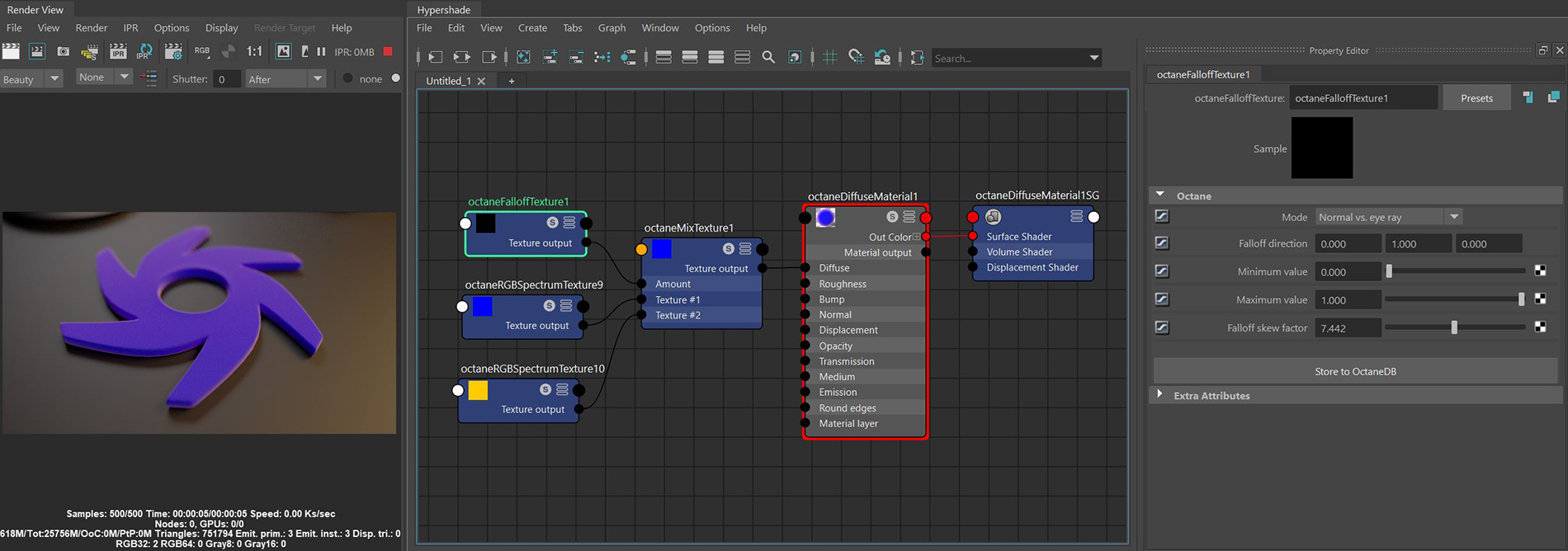
The Falloff texture controls blending for two materials, depending on the viewing angle of the material's geometry. This can help simulate coating effects visible in reflections from car paint, glass windows, x-ray effects, and velvet. Integrating the Falloff texture into a shader network lets you create a custom Fresnel control for any particular channel, and it is useful for controlling a Mix texture or material's Amount parameter.
Figure 1 shows a Falloff texture controlling a Mix texture's Amount parameter, which blends orange and blue RGB Spectrum texture nodes. The result is connected to the DiffuseAmount of diffusion, or the reflection of light photons at different angles from an uneven or granular surface. Used for dull, non-reflecting materials or mesh emitters. channel of an Octane shader.

Figure 1 : A Falloff texture controls a Mix texture's Amount parameter
Mode - This menu has three options for determining how falloff is calculated.
Falloff Direction - This is used by the Normal vs. Vector 90deg and Normal vs. Vector 180deg modes. For most materials, the Fresnel effect (the default mode) is often correct, while Falloff Direction applies for exceptional cases, which can adjust relative to the camera. Changing the object rotation will not change the Falloff Direction orientation.
Minimum Value - Controls the Falloff texture value as it appears on the parts of the surface that face the viewer, also known as the normal angle. A value of 0 displays the material connected to MaterialThe representation of the surface or volume properties of an object. pin 2, and a value of 1 displays the material connected to Material pin 1.
Maximum Value - Controls the Falloff texture value as it appears on the parts of the surface that turn away from the viewer, also known as glancing or grazing angles. A value of 0 displays the material connected to Material pin 2, and a value of 1 displays the material connected to Material pin 1.
Falloff Skew Factor - Balances the Normal and Grazing angles' influence. Low values result in stronger Grazing angle influence - any textures that the Maximum Value controls cover more surface. High values result in stronger Normal angle influence - any textures that the Minimum Value controls cover more surface.